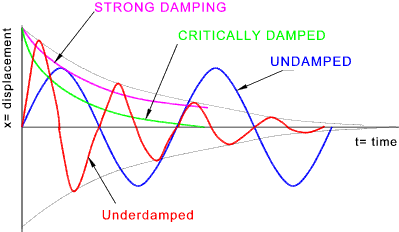Take Vortex Shedding Seriously

When I was a new Engineer working for an equipment manufacturer, I can say that I didn’t have a healthy appreciation for wind Induced vibration (vortex shedding). I worked for an equipment manufacturer who won and lost jobs based upon our cost, and considering vortex shedding increased our cost and decreased our competitiveness. We really didn’t have many real world examples of vortex shedding occurring on our stacks and so understandably the company just didn’t believe it to be a serious problem. It only took a couple of real-world problems to occur for all of that to change.
What is Vortex Shedding?
Vortex shedding is a phenomena that can occur with all shapes of structures, but it is very prominent in cylindrical structures. The most famous example of vortex shedding is the Washington State Tacoma Narrows Bridge which failed shortly after construction was completed. We have assembled an amateur video of the Tacoma Narrows bridge as well as several other great examples of vortex shedding. The video is to the right, and it really is worth watching.
How do you Calculate Vortex Shedding?
The calculations can be quite involved, depending upon the code, but I can give some of the basics. The first thing you need is a natural frequency, and unfortunately there aren’t many easy ways of estimating the frequency unless you are dealing with a constant diameter and constant thickness stack. Software is usually used to calculate frequency of stacks, such as our MecaStack software. Once you have the frequency then you can calculate the critical wind speed (Vc).
Vc = f * D / S
f = Natural Frequency (Hz)
D = Outer diameter of Stack over top 1/3
S = Strouhal Number, usually taken as 0.2 for round shapes
Let’s take a real world example, lets say we have a stack with a f = 1 Hz, D = 2 m [6.56 ft] and S = 0.2.
Vc = (1 Hz ) * (2 m) / 0.2 = 10 m / s [22.4 mph]
The critical wind speed Vc is the wind speed at which vorticies are shed, and the stack is most likely to vibrate. In this example, 10 m/s is quite low and so it is highly unlikely that the stack could experience vortex shedding. The specific criteria is more complicated, but as a rule of thumb, if your design wind speed is 40 m/s then you could potentially have a problem if the Vc <= 40 m/s.
If Vc is low do I always have a problem?
Not necessarily, there are calculations involved. Even though Vc may be low enough that it can occur on a regular basis, the question becomes whether the stack has enough inherent damping. If you look at the graph to the left, an undamped system will vibrate indefinitely. A low damped system will vibrate for some time before it eventually reduces to a negligible amplitude. Most stack design codes (ASME STS-1, CICIND, Euro, etc..) have equations that estimates the amplitude of vibration that is to be expected on this stack. These equations take into account frequency, mass distribution, stiffness and most importantly structural damping. The structural damping plays a HUGE role in the predicted vibration amplitude. A typical value for structural damping is 0.002, which is a very small number. Just increasing this to 0.003 can make a huge impact, since it’s a 50% increase in value.

How do I estimate Damping?
This is the tough part, there isn’t any calculation you can do to estimate damping. It is a measure of how much energy is dissipated by the system. A very stiff stack mounted on a very stiff foundation has very low damping. A stack with a lot of heavy refractory and a more flexible foundation will absorb energy, and thus will have a higher damping. It’s a very inexact science and one that requires a lot of tough decisions.
My recommendation is to be conservative. If you aren’t sure, then estimate low. You don’t want to win the job and then have a stack show up in our Vortex Shedding Video of examples of what not to do. When vortex shedding does occur, the resolutions can become very expensive.

What to do when you have a problem?
When you have a vortex shedding problem there are a few options. We will go into these options in more detail in subsequent posts, but we will highlight the most common solutions.
1) Add Helical Strakes
2) Add a Tuned Mass Damper (TMD)
3) Add a Damping Pad
4) Add a Tuned Liquid Damper (TLD)
5) Increase stack stiffness to increase Critical Wind Speed above upper limit
6) Decrease stack frequency to decrease Critical Wind Speed
We will discuss some of these options in future posts, and we are always available to provide a free consultation on evaluating a specific situation to find the best solution. Simply email us at [email protected]



